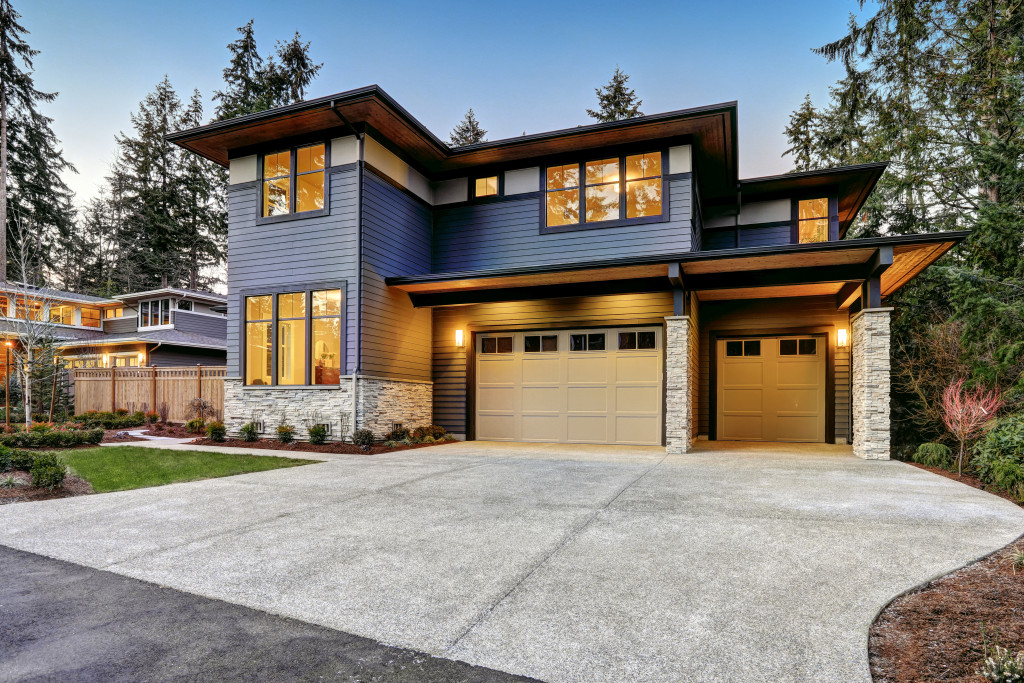- Energy-efficient homes save money and reduce carbon footprints; methods include LED lights, efficient windows, weather strips, and programmable thermostats.
- Low-flow showerheads reduce water and heating bills, contributing to overall energy efficiency in your home.
- Proper insulation – fiberglass, cellulose, spray foam, or radiant barrier – significantly enhances energy efficiency.
- Small changes and bigger investments toward energy efficiency are all crucial steps toward a more sustainable future.
As a homeowner, you are always looking for ways to keep your bills low while still enjoying all the comforts of home. One effective way to do just that is to make your home more energy-efficient.
Not only can you save money on your energy bills, but you can also help the environment by reducing your carbon footprint. However, it can be daunting to know where to start. Luckily, there are several affordable products and techniques that can help make your home more energy-efficient. In this blog, you will learn about a few of them.
Install LED Light Bulbs

One of the easiest and cheapest ways to make your home more energy-efficient is to switch out your traditional light bulbs for LED ones. LED bulbs use 75% less energy than traditional bulbs and last up to 25 times longer. While they may cost a bit more upfront, the savings you’ll get on your energy bills will quickly make up for it.
Opt For Energy-Efficient Windows
Installing energy-efficient windows is another great way to make your home more energy-efficient. These types of windows are designed to keep cool air in during the summer and warm air in during the winter, making it easier for you to regulate the temperature of your home and save on energy costs.
You can employ the help of a professional window replacement service provider to help you find the right windows for your home. They will be able to guide you through the process and ensure that your new windows are properly installed.
Use Weather Strips
Sealing gaps and leaks around windows and doors with weather strips are another affordable way to make your home more energy-efficient. It prevents drafts and keeps air from escaping, reducing the need for heating and cooling systems. Weather stripping can be found at most hardware stores and is easy to install yourself.
Install Programmable Thermostats
A programmable thermostat allows you to set the temperature of your home to your liking but can also be programmed to automatically adjust while you’re away or asleep. This makes it a great investment, not only for saving energy but also for saving money on your energy bills.
Switch to Low-Flow Showerheads
Reducing water usage also helps make your home more energy-efficient. Switching to low-flow showerheads can reduce the amount of hot water used, which can cut down on both your water and heating bills. These showerheads use half the water that traditional showerheads do while still providing adequate water pressure.
Add Insulation
An insulated home helps reduce the amount of heat that escapes during the colder months and keeps your home cooler during the warmer months. If you have an older home, it may not be properly insulated. Adding insulation to walls and attics will help keep your home more energy-efficient. Just make sure to choose the right kind of insulation for your home. Here are four of the most common ones you need to know about:
Fiberglass insulation
Fiberglass insulation is made from recycled glass and can be used on walls, attics, ceilings, and floors. It is the most common type of insulation and is relatively affordable.
Cellulose insulation
Cellulose insulation is made from recycled paper products like newspapers or cardboard boxes. It has a higher R-value than fiberglass insulation, making it great for keeping your home warm in the winter.
Spray foam insulation

Spray foam insulation is a liquid applied to walls and attics and then expands to fill gaps or holes. It has a higher R-value than fiberglass and cellulose insulation, making it great for keeping your home energy-efficient year-round. However, it can be more expensive than other types of insulation.
Radiant barrier insulation
Radiant barrier insulation is designed to deflect heat away from your home. It can be installed in attics and walls and is especially effective in hot climates, where it can help reduce cooling costs.
Increasing the energy efficiency of your home is an investment that pays off. It can lead to substantial savings on your energy bills and contribute to a healthier environment by reducing your carbon footprint.
Changes like switching to LED light bulbs or installing weather strips can make a difference. Bigger investments like upgrading insulation or installing energy-efficient windows can provide significant long-term benefits. Remember, every step you take towards a more energy-efficient home is a step towards a more sustainable future.
